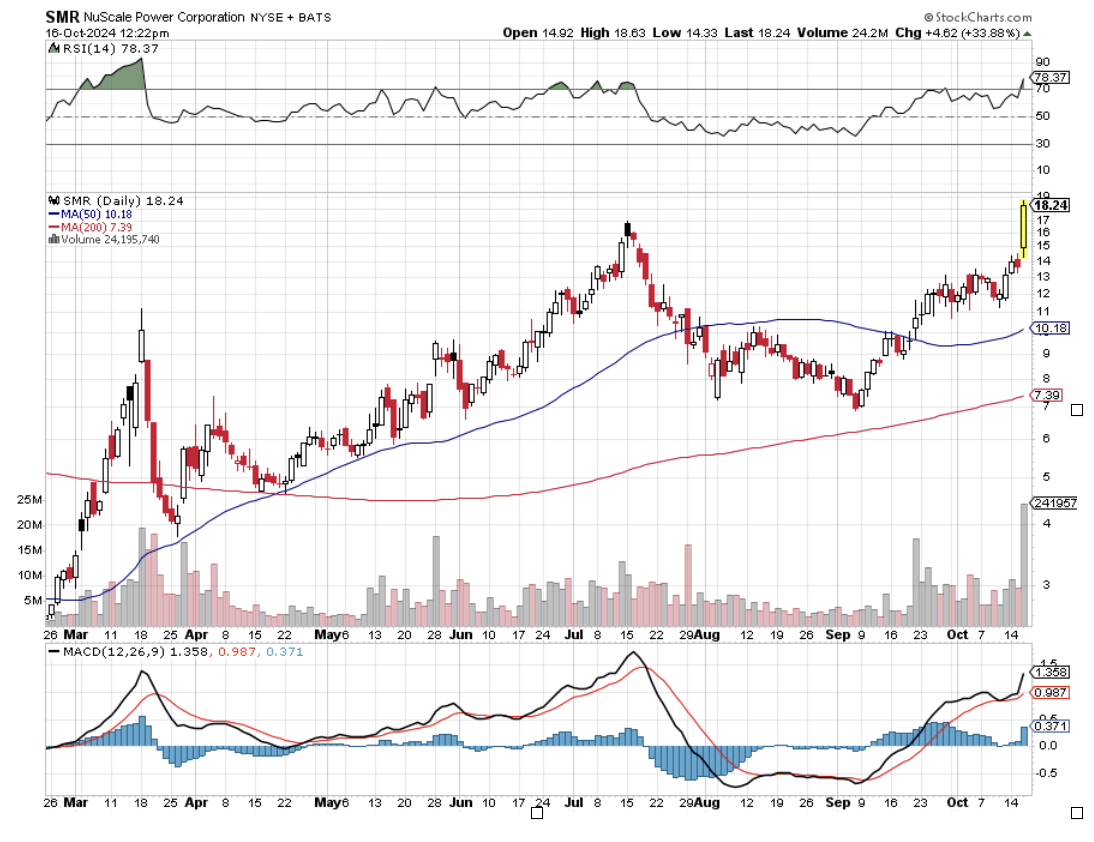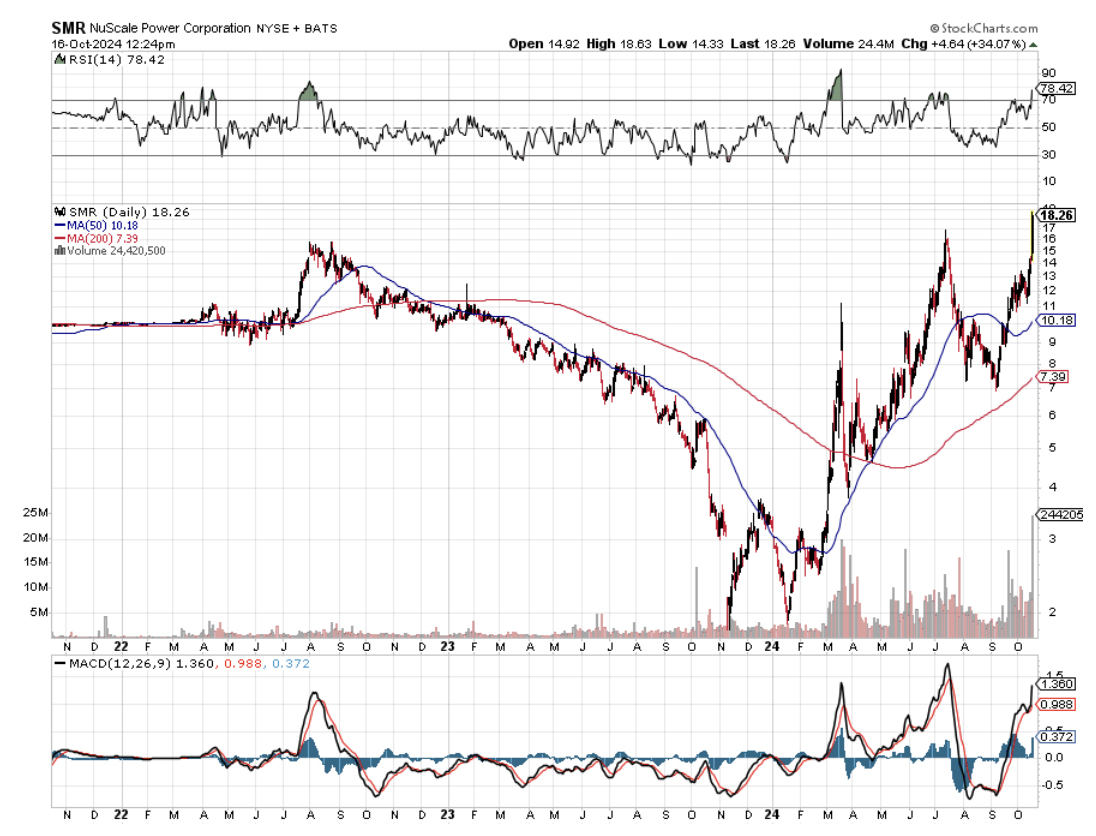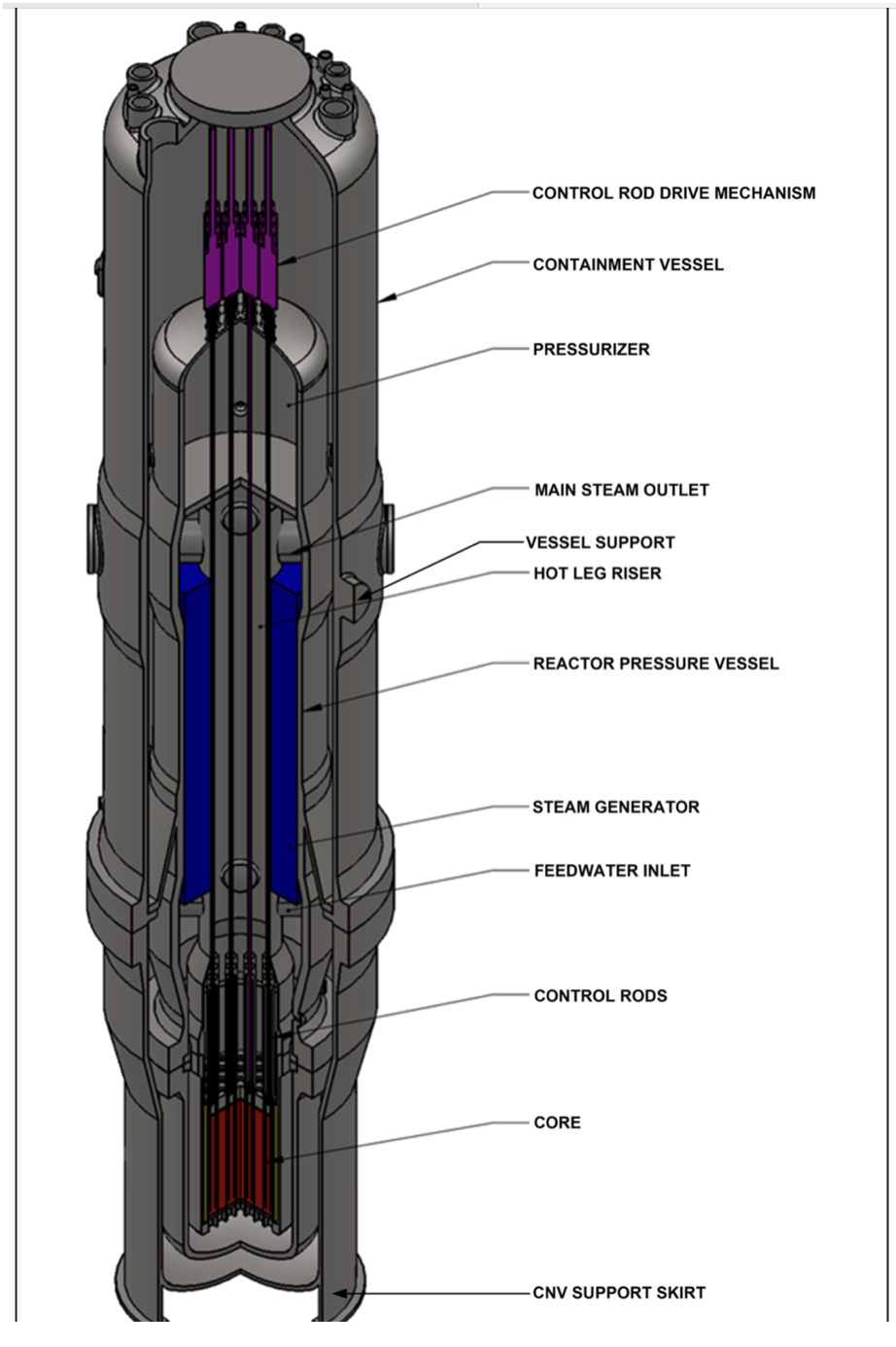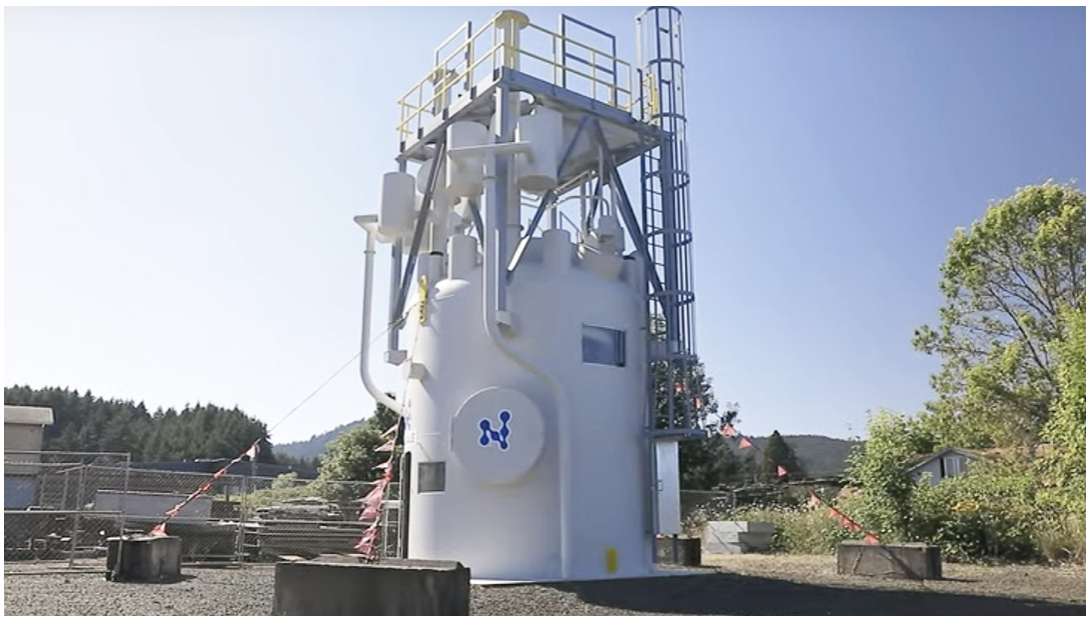A 35% move-up in one day certainly gets one’s attention. The move was prompted by Microsoft’s (MSFT), Google (GOOGL), and Amazon’s (AMZN) move into the nuclear industry to supply electricity for AI data centers over the past two weeks.
Building on my early career at the Atomic Energy Commission in the 1970’s, I have been covering this company since 2012, and it has been a long and windy road. In one shot, they have solved the dozen problems that held the industry back in the 1950’s.
But thanks to Three Mile Island, Chernobyl, and Fukushima, nuclear had the kiss of death on it, making it impossible for the company to raise capital. The Company finally went public in May 2022 at $10.55 with major backing from Bill Gates, with the ticker symbol of (SMR) for “small modular reactor.”
Then, it rallied 60% when it obtained its first order. It then crashed to $1.80 in 2023 when that single order was canceled. It has doubled since September 1, when the new nuclear movement gained traction.
Nuscale’s design eliminates the risk of a meltdown by refining uranium into small pellets and then encasing them with five layers of zirconium. The heat generated is enough to boil water but not go supercritical. The cost of huge billion-dollar containment structures is eliminated by putting the plants underground.
Below, find my original 2012 research piece.
“On my recent trip to Oregon, I met with venture capital investors in NuScale Power, which is trailblazing the brave new world of “new” nuclear. Their technology has been pioneered by Dr. Jose Reyes, dean of the School of Engineering at Oregon State University in Corvallis.
This is definitely not your father’s nuclear power plant. The company has applied for design certification with the Nuclear Regulatory Commission for a mini-light water reactor with a passive cooling system rated at 45 megawatts. The idea is to site a dozen of these together, which in aggregate can generate 540 Megawatts, little more than half the size of the old 1-gigawatt monsters.
Running a dozen small reactors instead of one big one makes for vastly easier operation and maintenance, as individual units can be brought on and offline as needed. Small size also eliminates the need for gargantuan, expensive containment structures.
This power source runs at night when solar and wind plants are offline. Modular design makes mass production of these units economical. Once certification, approval, permitting, and construction are complete, we can expect to see the NuScale plants running by 2018.
After all, if something similar works in nuclear-powered submarines and aircraft carriers, why not in industrial zones on the outskirts of town? For more on NuScale’s innovative efforts, visit their website by clicking here.”
While the stock has already had a great run from the bottom up tenfold, it's probably not too late to buy. This could be another Nvidia-type situation.





My Old Jeep


